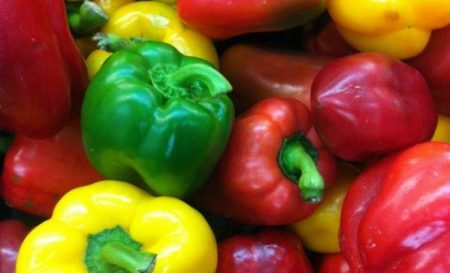
Among various varieties, as well as hybrid forms of this culture, thick-walled sweet peppers are especially popular among gardeners. They are best suited for the preparation of salads, also very many use such fruits for stuffing, freezing. Growing such peppers is beneficial, although it requires knowledge of some of the features of agricultural technology. But the most important thing is to choose the right variety: in terms of ripening, in taste.
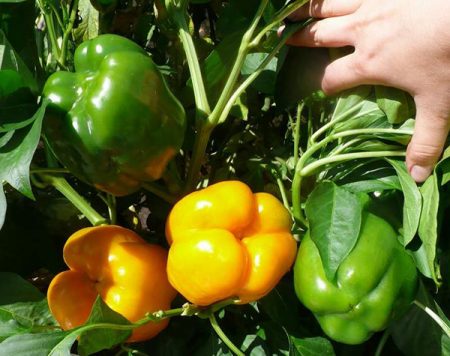
Today, gardeners can buy pepper seeds with thick walls from a variety of manufacturers. Many varieties and hybrids have been bred that have proven themselves in various regions of the Russian Federation, including in territories with difficult climates. Our review presents peppers that can be grown in the suburbs, as well as thick-walled varieties bred by Siberian breeders.
As you know, thick-walled peppers are fruits in which the pericarp has a thickness of more than 6 mm. The shape of peppers, like coloring, can be very diverse, so it will not be difficult to find the fruit cones, prisms or barrels.
Content
The best varieties of pepper for greenhouses
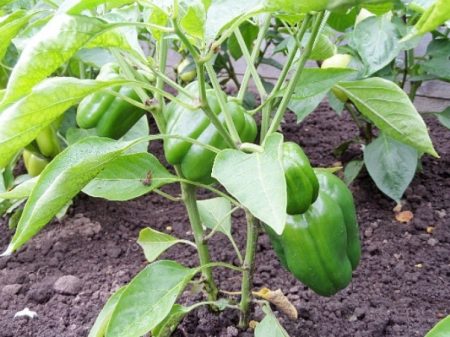
Heat-loving peppers bear fruit well in various shelters:
- greenhouses;
- greenhouses;
- tunnels.
Siberian breeders have bred a lot of varieties that delight with luxurious fruits, even in areas of risky farming.
Hybrids are presented in the review, the fruits of which are large in size, and the plants themselves are resistant to both diseases and adverse weather conditions.
Siberian format
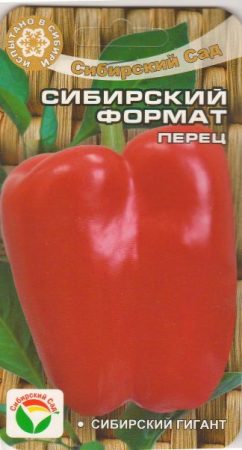
Up to 12-15 large fruits weighing up to 200-300 grams can grow on one bush of this variety of pepper. Those. Who grew this variety is simply amazed at the size of the peppers, as well as their excellent taste.
Plants grow to about 70-80 cm, sprawling, with lots of leaves. Fruits are beautifully aligned cubes, reach a length of approximately 12 cm, with a pericarp of up to 10 mm. At first they are dark green, then they become maroon.
Peppers taste very sweet with a pleasant aroma. The flesh of the walls is tender, juicy, therefore the fruits are used both for salads and for various preservation (in marinades with slices).
Siberian bonus
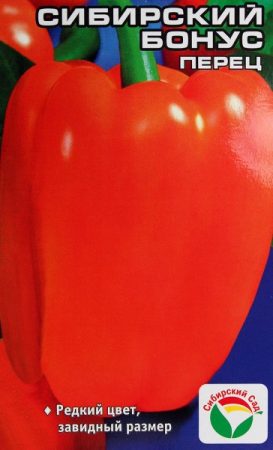
This variety will surprise with yield, as well as large, unusual orange-colored fruits. Since 2012, the variety is present in the State Register of the Russian Federation, it is recommended for cultivation in greenhouses.
The bush is powerful, up to 80 cm, with a closed shape, which allows you to hide the forming peppers. The fruits are cylindrical, bellied, with a wall thickness of up to 10 mm. Usually inside the fetus there are 3 cameras. Taste - classic pepper, with sweet notes. The skin is dense and gradually changes color from dark green to bright orange as it ripens.
With one sq. meters can collect up to 3-4 kg of fruit. The value of the Siberian bonus variety: resistance to temperature changes, good keeping quality, the fruits do not lose their presentation for a long time, the walls remain dense and elastic.
Tusk
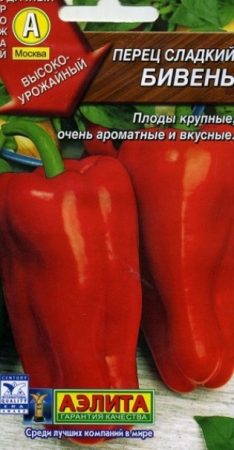
Low tusk pepper Tusk can be grown on beds, but still it gives a higher yield in the greenhouse. His bush barely reaches 50 cm, and the more surprising is that on such a small plant they spice large peppers with thick walls. Fruit weight - up to 280-300 grams, the pulp is very juicy, tasty. Peppers are conical in shape, peeled with a little gloss, first creamy green, then red.
In terms of productivity, its indicators reach 2-2.5 kg per square meter. meter, which seems to be not very much. But due to the compactness of the bushes, they can be planted more, and with proper agricultural technology to get very good results.
Mustang
For those who love lecho, a variety of unpretentious pepper of Siberian selection under the colorful name Mustang is offered. The fruits begin to ripen already in the 110-114 year, while peppers differ in large sizes (up to 300 grams), and excellent taste.
Peppers are drooping, have the form of cones, beautiful and aligned in weight. First, the color of the skin of the fruit is green, then the color changes to bright red. The pericarp is 8 mm, so it is no coincidence that Mustang is usually used for cooking lecho, stuffing. Such peppers are also good in preservation, in salads.
Productivity is very good, from one square meter, subject to watering and top dressing, up to 6-7 kg of fruits are harvested. Feature of a grade: resistance to cooling. On the bags of Mustang (the company "Ural summer resident") and so it is directly indicated: the grade for super-lecho.
hippopotamus
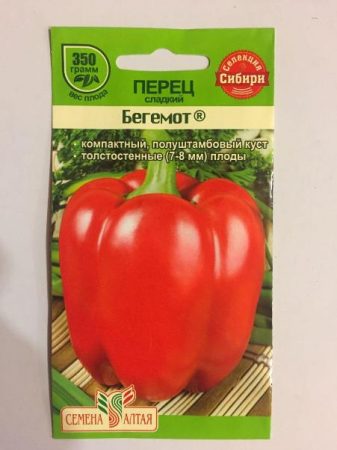
Hippos are powerful animals, and the choice of this name for the pepper variety was not accidental. Its fruits - weighing up to 300-350 grams, are really large and very sweet. The thickness of the dark red fleshy walls is 8 mm.
The bush itself has an average height (about 70-80 cm), belongs to the semi-stem varieties of pepper, is compact. Productivity is average, up to 1.2-2 kg per square meter. meters, but mostly grown hippopotamus for the sake of delicious cubes of pepper. Fruits are suitable for preservation, salads, stuffing, freezing.
Sweet chocolate
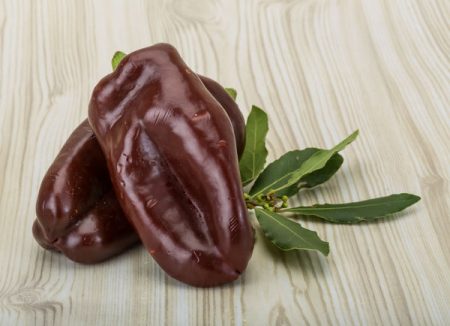
Sweet and juicy peppers, similar in color to chocolates - do you think this does not happen? The Sweet Chocolate variety was bred in Siberia and adapted for regions with a harsh climate. The plant reaches about 80 cm in height, fruits - up to 100 grams. The pericarp is thick, up to 10 mm. The peel of the cuboid fruit is dense, glossy, in the period of full ripeness acquires a dark chocolate color.
Peppers are used to make salads, very tasty and beautiful in slices, suitable for preservation.
The best varieties of pepper for open ground
This section is devoted to Siberian selection peppers that can be grown on ridges in the open. Although it should be noted that all the same yields under shelters will be higher, especially if the climate is cold and it is difficult to predict what vagaries the weather will present in the summer.
Firstborn of Siberia
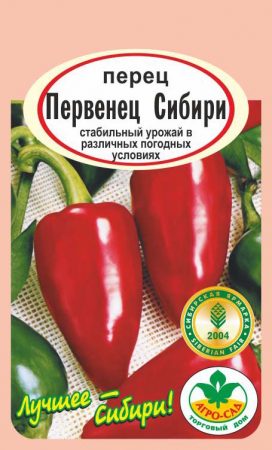
One of the most fruitful peppers of Siberian selection is the mid-season variety Pervenets of Siberia. On a compact bush up to 30-45 cm tall, small peppers form. Their shape is pyramidal, with an average weight of up to 70 grams. The skin is glossy, first yellowish, and then red. Pericarpium - 7-10 mm.
This variety is characterized by stable (up to 10-12 kg per one sq. Meter) yield, resistance to many diseases, and high commercial quality of fruits. Lying variety and suitable for transportation.
Peppers are used for preserving, preparing various dishes.
Dandy
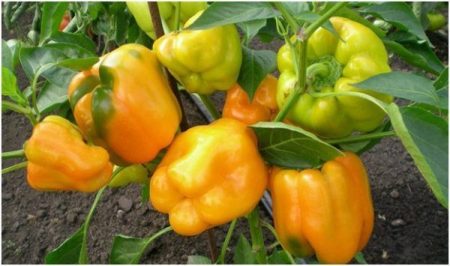
For cultivation in the beds, the Siberian Garden breeders developed an early variety of Schegol pepper. On low sprawling bushes, beautiful cylindrical fruits ripen weighing up to 120-130 grams.
They are used in salads, for lecho, preservation, and above all, the variety is appreciated for the thick walls of peppers (up to 10 mm). In the “plus” should be attributed unpretentiousness of Schegol, its resistance to temperature extremes, stable yield.
The color of the fruit is first green, then, in the phase of biological ripeness, they become bright yellow.Productivity - more than 3.8 kg per square meter. meter.
Fat toss
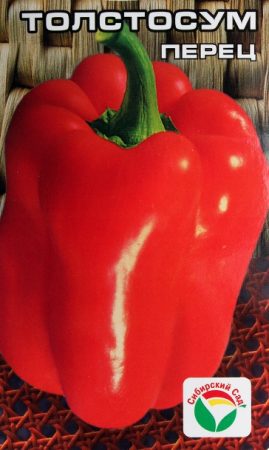
A baby variety that will delight with fruits weighing up to 200 grams. Of the varieties of Siberian breeding, this variety is considered one of the thickest, pericarp, 10-12 mm.
The bush is low, up to 45-50 cm, early ripening by maturity. Prismatic fruits, with slight ribbing, slightly flattened. The peel, when fully ripe, has a bright red color.
The peculiarity of the variety Tolstosum: unpretentiousness, compactness, increased content of vitamin C.
Merchant
A good harvest when grown right on the beds will also please the Merchant variety. This is an early pepper that forms fruits weighing up to 90-100 grams. Peppers are thick-walled, up to 7 mm, delicious and very fragrant. They have a pyramidal shape, which makes them suitable for any kind of preservation, stuffing.
The bush itself is up to 90 cm, semi-spreading, tolerates cold snap well. It is recommended to cover plants on ridges with nonwoven materials.
Apple saved
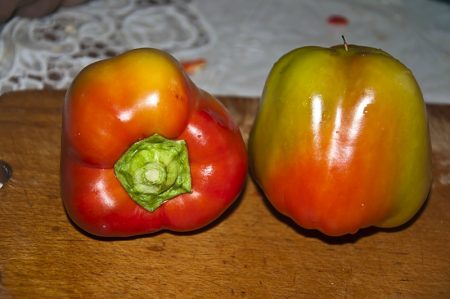
The height of the bush, this variety of pepper is inferior to many, it grows only up to 45 cm. But this does not prevent it from forming large and sweet peppers weighing up to 200-300 grams. The Apple variety was saved well by combining early ripeness, compactness of the plant and large-fruited.
It is for these qualities that he enjoys special attention among gardeners. Fruits are cuboid, first have a dark green color, then gradually turn red. The thickness of the pericarp is up to 9 mm, the pulp is very juicy and sweet. The yield of such crumbs is up to 1.5 kg per bush, with 1 square. meter can plant up to 5 plants. Ripening dates - about 100 days, it is recommended for cultivation on beds, and also in hotbeds and under arches.
Novosibirsk
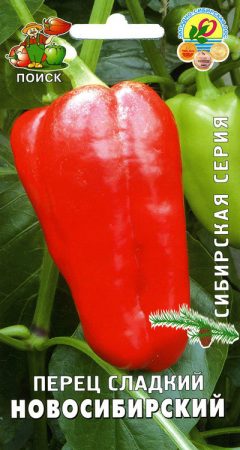
Only a hundred days you will need to wait until the first fruits of Novosibirsk pepper are picked. Of course, you have to work hard, but with one square meter. meters can be removed up to 10 kg of fruit.
The variety is very unpretentious, early, productive. The plant usually reaches 60-70 cm, the fruits are prismatic, grow in different directions, bright red. By weight, each pepper grows to 120-150 grams, with good care you can grow peppers and a little larger (up to 180 grams). Walls up to 7-8 mm thick.
Taste is very good, aroma is present. This variety is suitable for processing and for salads.
Siberian boots
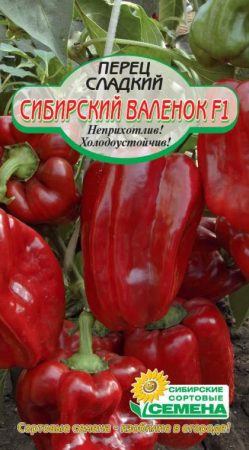
Cold-resistant and unpretentious - these are two parameters that distinguish this hybrid from a number of others. However, the Siberian felt boots are distinguished by large fruits and excellent taste, while his peppers ripen for 100-110 days.
The height of the plant is up to 70 cm, it is recommended for cultivation in open ground (however, this variety, like others, can be planted in shelters). Fruits - elongated cuboid, weighing up to 180 grams, with red skin.
The thickness of the pericarp is 9-10 mm. The variety is suitable for salads, slices, preservation, lecho and freezing.
East market
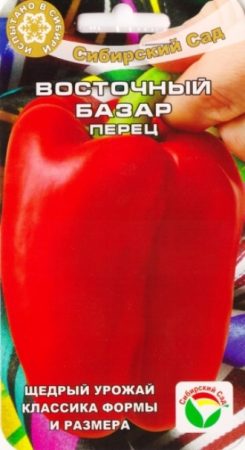
This is a classic sweet pepper, with prismatic, slightly elongated fruits of red color and thick (up to 7-8 mm) walls.
Variety Oriental Bazaar - medium early, excellent fruiting in open ground, has a high yield (up to 4.5-5 kg / sq.m).
It was bred by Siberian breeders, adapted for a difficult climate, and is very resistant to diseases. The bush grows to about 70 cm, the fruits by weight - up to 150 grams.
Use this pepper for stuffing (ideal), freezing, lecho, preservation and salads.
The best varieties of early thick-walled pepper for Moscow region
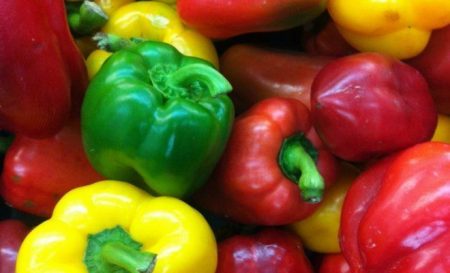
This section of our review shows peppers that are successfully grown in the middle zone of the country, in the suburbs. However, their geography is not limited only to these territories, and Atlant, and Winnie the Pooh, as well as other thick-walled hybrids and varieties can be seen in the areas of gardeners in different regions of the Russian Federation. These peppers were bred by various breeders (including foreign ones), and if you do not want to dwell only on varieties of Siberian selection, you can try others.
Fidelio
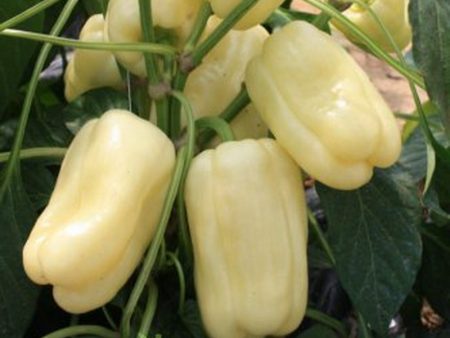
The early ripening hybrid is famous not only for juicy thick-walled fruits, but also for their color. The skin of fleshy peppers has a silver-white color.
Fidelio F1 hybrid ripens in about 90 days, the plant reaches a meter in height. Fruits of a cuboid shape, up to 160-175 grams, with a wall thickness of up to 8 mm.
They are used in all types of preservation, for salads, slices, as well as stuffing. Dishes with pepper of such an unusual color look very festive and beautiful.
Rhapsody
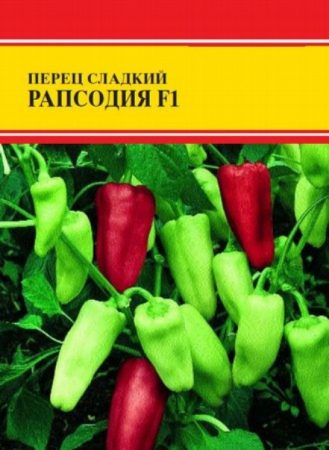
Many gardeners appreciated the powerful and highly productive hybrid under the romantic name Rhapsody. This is an early (up to 90 days) pepper, which forms large, prismatic fruits. Each weight is up to 100 grams, the skin is red, with gloss. Pericarpius - up to 7 mm.
This hybrid gives good yields both in beds and in greenhouses. The variety is suitable for salads, stuffing, preservation.
Orange miracle
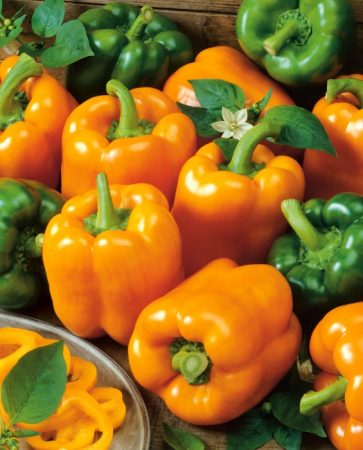
The favorite of many gardeners is pepper Orange miracle. It is valued for productivity, tasty fruits, the ability to use them for cooking lecho, stuffed dishes, marinades and preservation.
The bush of this hybrid is very powerful, in height - up to 110 cm, leafy. It is recommended to grow in greenhouses, while the plant needs formation and garter.
With proper care, you can get up to 14 kg of fruits with 1 square. meter landings. Peppers are large, by weight - up to 200-250 grams, with the skin first green, and then bright orange. The pericarp is up to 10 mm, the shape of the fruit is cuboid, aligned. In the greenhouse per 1 square. 3-4 plants are planted per meter.
Atlantic
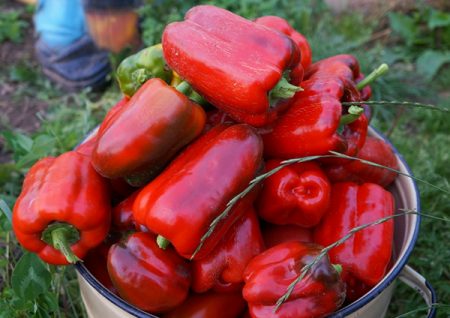
The hybrid, created by Dutch breeders, is willingly grown by many gardeners. Atlantic F1 - a productive, fairly unpretentious pepper, which has tasty and large fruits.
The plant reaches a meter in height (maybe a little more), needs support. Peppers have a cuboid elongated shape, weighing up to 300-350 grams, very juicy. Wall thickness - up to 9 mm.
Pepper is great for slices, salads, used for cooking lecho, as well as for freezing.
Winnie the Pooh
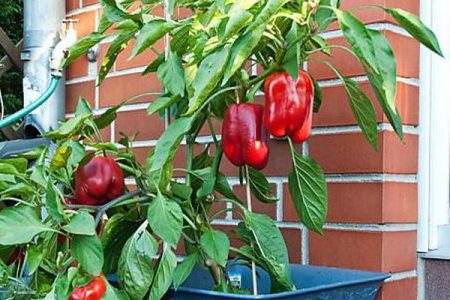
A variety that can produce crops even in the worst of summers is Winnie the Pooh. A short bush (up to 30 cm) has a bouquet arrangement of fruits. Such varieties of pepper are well suited for compact plantings, they grow well in greenhouses with tall tomatoes, with eggplant.
Winnie-the-Pooh pepper has been on the State Register lists since 1981, and so far it has not lost its position. The variety is appreciated for its unpretentiousness, excellent taste of peppers, keeping fruit. Cone-shaped peppers, first have a light green color, then turn red.
By weight of the fruit - up to 70 grams, pericarp - about 7 mm. The variety is great for preservation, all types of processing, stuffing. When grown per 1 square. meter can be planted up to 8-10 bushes.
Pound
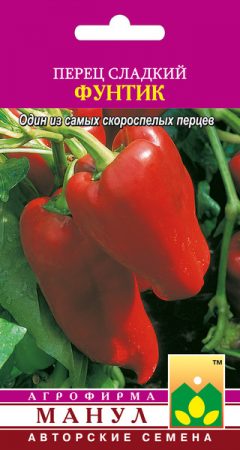
Resistant to various diseases, the Funtik variety belongs to early ripe peppers. Its fruits are large, weigh up to 180-200 grams, a bright red color. The shape of the peppers is cylindrical with narrowing, relief and ribbing are absent.
The taste of the fruit is excellent, the walls are thick, up to 7 mm. Funtik gives stable yields even in short summer conditions, resistant to temperature changes, while the first fruits (green, in the phase of technical maturity) are removed for 100 days. Usually up to 12-14 fruits are formed on a plant, yield indicators are high.
Pace
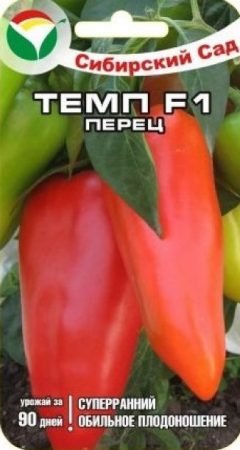
An interesting thick-walled Temp hybrid will decorate any greenhouse and will delight you with a good harvest of fruits. Peppers at first have a yellowish color, later, as they ripen, they turn red. At the same time, a large number of colorful fruits ripen on a bush up to 50-60 cm tall - up to 10-12 pieces.
The fruits are directed downward, have a cone shape, and weigh about 120 grams in weight. Due to the thick (up to 6 mm) walls, this hybrid is used for lecho, stuffing, and freezing. It is tasty and beautiful in fresh salads.
Feature of the variety: sweet taste even during the period of technical maturity.
Agapovsky
The Agapovsky variety, known to many, is grown not only in the Moscow Region, but also in other areas of the country.The variety has a heavily leafy bush, the fruits are prisms, large, weighing up to 120 grams. Peppers have thick walls (up to 7 mm), have a very strong pleasant aroma, good taste.
The peel is first dark green, as in many varieties, then blushes. The peduncle is not depressed, the fruits are glossy. This variety is famous for its productivity, with one square. meters can collect up to 10-11 kg of fruit.
Gives the best results when grown in greenhouses, planting - no more than 4 plants per 1 square. meter.
Atlant
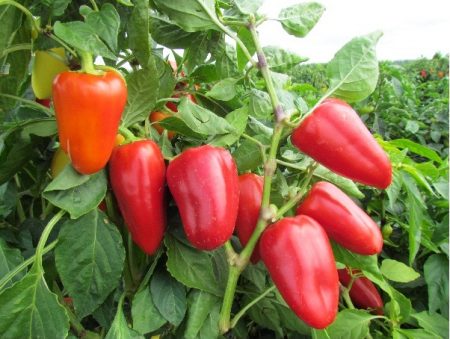
The Atlant variety proved to be very good, the fruits of which differ in juiciness and thick walls. By weight they grow up to 200 grams, with good care you can get from 1 "square" of plantings to 3-3.5 kg of peppers.
It is better to plant this variety in a greenhouse, bushes - up to 75 cm tall need a garter to stakes. Trellis cultivation also works well.
The shape of the peppers is a cone, the fruits grow wilted, up to 14 cm in length. The taste is excellent, and the use cases are very different: on the lecho, for stuffing, in freezing or on salads.
Cardinal
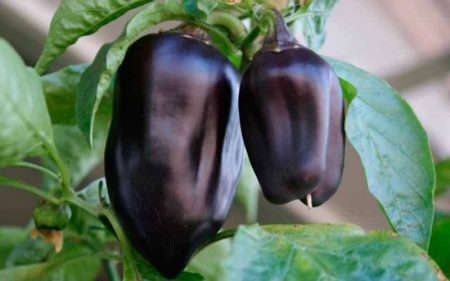
The Dutch hybrid will surprise you with the unusual color of peppers, the skin of which at the moment of full ripening becomes dark purple. Many varieties of peppers in the ripeness phase are red, and the Cardinal “changes” the red color to a more solid and original one.
Peppers are large, by weight - up to 250-280 grams, while the wall thickness reaches almost 9 mm. The taste is pleasant, sweet, no bitterness.
The advantage of the overseas hybrid is its excellent (up to 9-13 kg per 1 sq. Meter) yield even in adverse conditions. But you need to provide the plant with good care (watering, nutrition), only then will the hybrid please.
Latino
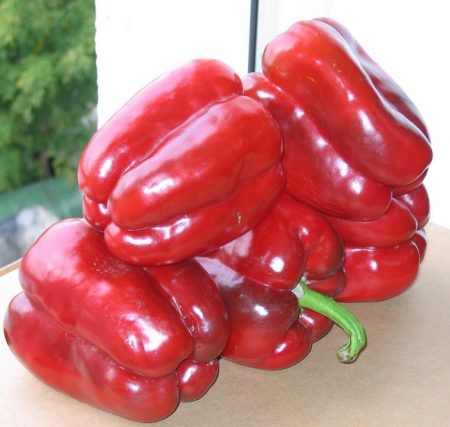
Among the reviews on the garden forums you can see a lot of eulogies about the hybrid Latino pepper. It is appreciated for its taste, high commercial qualities of peppers, and resistance to many diseases.
The fruits of Latino are cuboid, weigh almost 180-200 grams, first dark green, and then dark red. This is a thick-walled pepper, pericarp up to 10 mm, so it is used for lecho, as well as slices and salads.
Bushes in height - a little more than a meter, when growing it is necessary to take care of backwater and garter.
Cockatoo
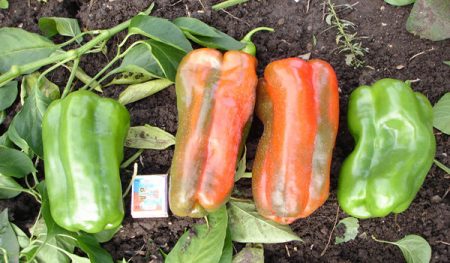
The fruits of this hybrid are very similar to the beak of a parrot, so the choice of name is quite justified. Mid-season pepper, usually grown in greenhouses, requires space, as it differs in power and growth. Height - up to one and a half meters, on the bush there are very spreading branches, the plant itself has a cup shape.
The peppers are fleshy, proboscis, curved, with pericarp up to 8 mm. The weight of the fruit is impressive - up to 400 grams; you can make an excellent salad from one pepper.
The fruits are excellent for various slices, salads, cooking delicious lecho, freezing. Very tasty marinades are obtained from the fruits of Kakadu.
Rules for growing thick-walled pepper seedlings
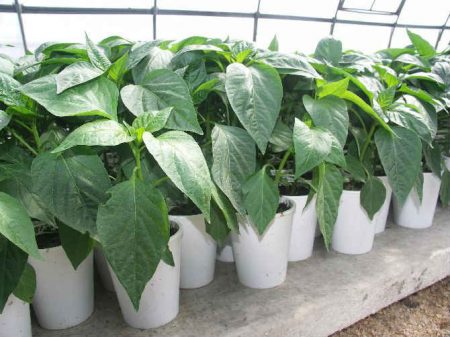
According to the basic methods of growing peppers with thick walls, there are no differences from ordinary varieties. Agricultural technology is standard, but we must remember that to get juicy fruits with the indicators indicated in the descriptions, you need to provide peppers with good care.
When the description contains information that a variety or hybrid of culture is unpretentious, this does not mean that it requires a minimum of care. Even the most non-capricious and super-productive variety will not be able to please you if you forget about watering, top dressing (especially hybrids), formation.
Growing the culture directly on the beds, you need to control the weather and, if necessary, cover the plants with a film, special materials. Of great importance is the preparation of soil, seeds, as well as proper care during the entire growing season.
Sowing seeds
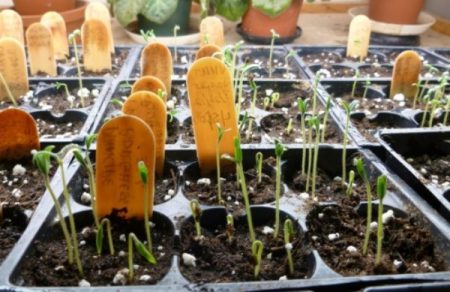
A feature of growing sweet pepper in our Russian conditions is the presence of a seedling period.Since this crop has a fairly long ripening period (even early peppers), early seed sowing and seedling cultivation, first at home, helps to create the right run in time.
Seeds of hybrid forms usually do not need preliminary preparation. There is also no need to process the seed if the bags indicate that the peppers have already passed the necessary procedures. For all other seeds, disinfection, soaking in growth stimulants, as well as germination are carried out.
Experienced gardeners already have an idea of the timing of sowing, they know and take into account the characteristics of the climate of the area, the timing of ripening peppers, weather.
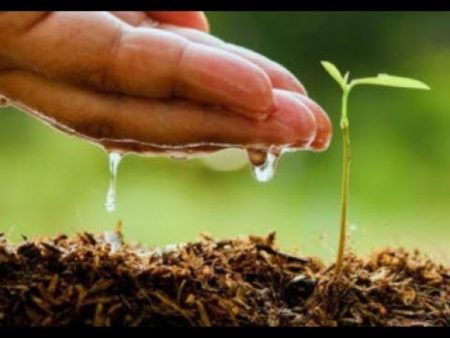
For seed dressing, potassium permanganate is used, keeping the seeds in it for no more than 20 minutes. The solution should be pink; after the procedure, the peppers are washed.
To speed up the germination of peppers, it is recommended to soak them in various special preparations. For this, they usually use:
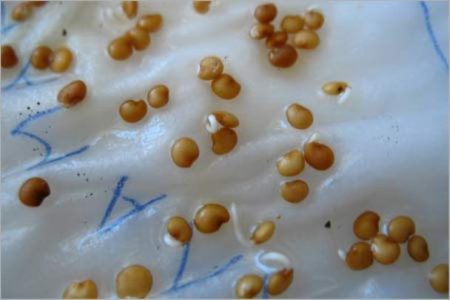
- Zircon;
- Epin.
Ash infusions are also used, ashes are then used to treat already adult peppers from pests, for top dressing. The seeds are hardened on a shelf in the refrigerator, and germinated in ordinary wet tissue.
There is nothing complicated here, such procedures take a little time, but there will be confidence that you will get healthier and better seedlings.
Seed germination
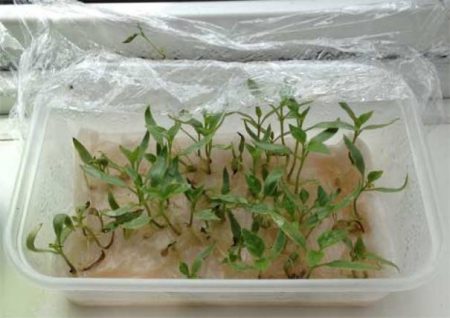
For sowing, various containers are used - boxes, glasses, containers. When sowing in general containers, later, seedlings will need to be transplanted in separate dishes, and this is very stressful for peppers.
Recently, gardeners most often immediately sow peppers in separate cups, then carry out the usual transshipment of plants into larger pots.
The soil should be nutritious, loose, high-quality. Using the earth prepared since the fall, do not forget to steam it, then you can spill it with a solution of potassium permanganate. Ready soil mixtures are suitable, while the composition should include such components as:
- Earth;
- peat;
- baking powder (perlite, vermiculite, sand);
- humus.
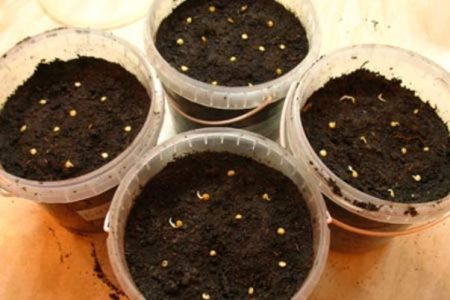
Mixes from the store, consisting of one peat are not suitable for peppers. To such soil it is required to add humus, earth (turf, leaf, sand).
Seeds are sown in small grooves (if sown in boxes), in holes (if sown immediately in cups). They withstand temperatures of + 28ºC ... + 30ºC for the entire germination period, as soon as sprouts of peppers appear, they are brought to light and reduced to + 18ºC. It will be enough to withstand seedlings in this mode for about 5-6 days, then again increase it to + 23ºC ... + 25ºC.
This is done so that the seedlings of peppers are not stretched. It is also important to provide the peppers with more light.
Dive seedlings
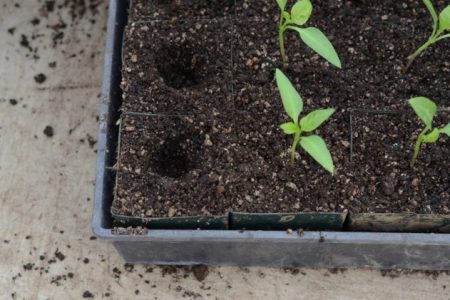
As soon as 2-3 real leaflets appear on peppers, you will need to dive (transplant). In advance you need to prepare the dishes where you will move the peppers.
Reception is carried out only if the seeds were sown in common boxes. In this case, the work must be carried out very carefully, without damaging the delicate roots of plants.
After a dive, seedlings shade from the rays of the sun for about 2-3 days. At this time, peppers will slow down in growth, will adapt to new conditions and this will take about 4-7 days.
The rest of the care for thick-walled peppers is standard. Having mastered simple tricks and following the recommendations, you will always get a harvest of delicious fruits.
Reviews
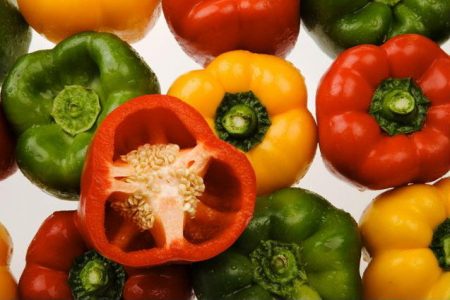
Eliza, Tula Region
I always choose early varieties, and in recent years I have been trying to take only thick-walled ones. They are good at lecho, and they can be rolled into jars perfectly. For the third year I have been planting Kakadu, growing in a greenhouse is just great.For our summer, which is either cold or heat, stands for weeks, this variety is simply ideal! The bushes grow about a meter, the fruits are simply huge, the first year I saw, I was so impressed! So I recommend it.
Polina, Kirov region
Among my favorite peppers is the Winnie the Pooh variety.
I grow different ones, including new ones, but I will never forget to buy this one. I do not collect seeds, I prefer to buy. The variety is very compact, I grow it in 15-20 bushes, always with a crop. Soot is about 8 pieces per square meter, everything breaks in, does not affect fruiting. The fruits are tasty, I bake them, freeze them and then add them to side dishes in the winter, soups, and also make salads in the summer.
Irina, Moscow region
I grow a lot of hybrids, every year I try, I select the best. Among the favorites - white (well, almost white) Fidelio. This is a large pepper with delicious fruits. Both he and Latino always delight me. Peppers such piglets are growing, while very tasty, as if growing in the south. Care is usual, but for hybrids, top dressing is always needed. I use complex supplements, and over the summer I usually do them 4-5 times.




 Calorie pepper stuffed with meat and rice - BZHU per 100 grams
Calorie pepper stuffed with meat and rice - BZHU per 100 grams Gorky pepper - the best varieties for open ground
Gorky pepper - the best varieties for open ground Hot pepper seeds - the best varieties for open ground and reviews
Hot pepper seeds - the best varieties for open ground and reviews Capsicum tincture for hair - how to use and reviews
Capsicum tincture for hair - how to use and reviews